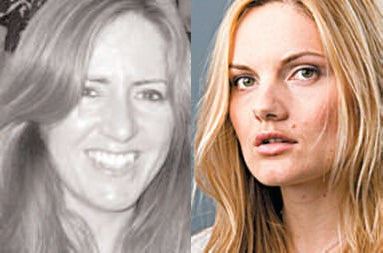Fashion editor
Shelly Vella is fashion director at Cosmopolitan. Danielle Radojcin is fashion editor at Handbag.com

Why you should consider fashion journalism
Shelly Vella: With very few key writing jobs in fashion, this is a challenging, exciting and competitive industry. Covering international catwalk collections is one of the jewels in the crown, as is travelling, meeting eccentric characters, and defining how the trends you see on a Paris runway become a commercial enterprise that “real” people will buy into.
Danielle Radojcin: If you want to write for a living and you are interested in fashion and lifestyle, then you’ve found your match. It’s a very attractive industry and, as a result, it’s really competitive.
What we’re looking for
SV: On a monthly magazine, our focus is on supplying headlines and short, sharp news pieces, rather than lengthy features. Therefore, someone with a flair for the written word and an awareness of what’s going on in fashion, television and film – and with celebrities – is essential, as is an ability to relate to and understand our readers.
DR: A nice writing style, lots of ideas, good networking skills, confidence, a sense of style and a sunny outlook.
What my job involves
SV: My main responsibility is interpreting the trends for our readers: we might see sci-fi fashions gracing the catwalk but I must ensure that what we put in the magazine is relevant. The team and I attend press days and events to keep abreast of what’s happening, working closely with public relations people as well as model and photography agencies.
DR: Working online is usually fast-paced and fun. A typical day could start with breakfast with a PR, then morning meetings at the office, followed by an afternoon of researching and writing copy. With Handbag TV, I even get to interview designers on camera. In the evenings there is usually some fashion event to pop along to, but don’t be fooled: these are not considered fun by the fashion sisterhood! They are just another opportunity to network so can be dull, but a glass of champagne always helps!
How much you could make
SV: Newspapers usually pay more highly than magazines. Generally, the industry isn’t very well paid but the higher you climb – and the more you move about titles – the better your salary. Freelancing is not for the fainthearted, but it can be lucrative if you're prepared to go the extra mile: being seen everywhere and submitting to a broad spectrum of titles.
DR: Unless you’re Suzy Menkes [fashion editor of the International Herald Tribune] at the top of the fashion food chain, you shouldn’t expect to earn a lot. However, there are often opportunities to bump up your earnings by freelancing for non-rival publications (always check with your editor first).
Tips from the top
SV: Work experience is key. The more knowledge you’re armed with, the better prepared you are. Making cups of tea, doing endless cupboard returns and making yourself indispensable to a fashion team will always stand you in good stead, not to mention giving you a way of finding out what aspect of the job you’d like to focus on.
DR: Be sure to leave your shyness at the door: fashion journalism requires confidence. Be professional at all times; it doesn’t matter if you’ve been dancing on tables all night, you still need to rock up to work on time and on form for those all-important brainstorming sessions. Finally, dress sharp: this is an industry that judges you by the cut of your jacket and the shape of your heel. Anyway, you’re a fashion editor, so you’re supposed to look damn good all the time!
Join our commenting forum
Join thought-provoking conversations, follow other Independent readers and see their replies
Comments
Bookmark popover
Removed from bookmarks